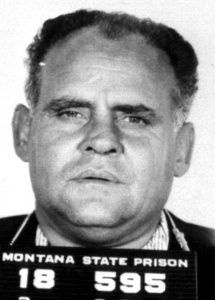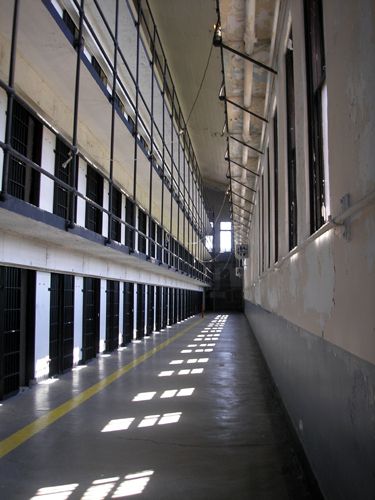
Echoes in the Wild: Unraveling America’s Enduring Legends, From Ancient Myths to Mt. Jerry’s Riot
From the whispering pines of the Pacific Northwest to the sun-baked deserts of the Southwest, America is a land saturated with stories. It is a vast tapestry woven from ancient indigenous myths, colonial campfire tales, frontier hyperbole, and the modern anxieties that birth urban legends. These are the legends of America – narratives that blur the lines between history and folklore, shaping national identity, explaining the inexplicable, and giving voice to our deepest hopes and fears. Far from being mere relics of the past, these tales continue to evolve, finding new forms and new platforms, as evidenced by recent, perplexing phenomena like the nascent mystery of "Mt. Jerry’s Riot."
The foundation of American legend lies deep within the soil, long before European sails touched its shores. Indigenous peoples across the continent possessed rich oral traditions, meticulously crafted over millennia, that explained creation, moral conduct, and the natural world. Figures like the Thunderbird, a colossal raptor whose wingbeats brought thunder and lightning, embodied the awesome power of nature. The trickster Coyote, a mischievous spirit, taught lessons through his often-foolish exploits. And the Sasquatch, or Bigfoot, a large, hairy, bipedal creature, finds its roots in the legends of numerous Native American tribes, predating its modern cryptid fame by centuries. For these cultures, these were not just stories but vital components of their cosmology, history, and spiritual understanding. As folklorist Barre Toelken noted, "Folklore is not just a collection of quaint customs; it is the fundamental way in which people think about themselves and their world."
With the arrival of European settlers, a new layer of legend began to form, often reflecting the challenges and terrors of an untamed wilderness. The dense forests and unfamiliar landscapes bred tales of malevolent spirits, strange creatures, and the constant threat of the unknown. Washington Irving, one of America’s earliest literary giants, masterfully captured this nascent folklore in his "The Legend of Sleepy Hollow," introducing the Headless Horseman, a spectral Hessian trooper forever searching for his lost head. This tale, set in the Hudson Valley, perfectly encapsulated the blend of Old World superstition and New World mystery that defined the era.

The colonial period also saw the rise of cautionary tales and moral fables. The infamous Salem Witch Trials, though a dark chapter in history, spawned lasting legends of witchcraft and spectral accusations that still resonate. Over time, as the young nation pushed westward, the legends grew bigger, bolder, and distinctly American.
The 19th century, with its fervent westward expansion and the forging of a national identity, was the golden age of the American tall tale. These were not just stories but exaggerations that celebrated strength, ingenuity, and the triumph of man over nature. Paul Bunyan, the colossal lumberjack and his blue ox, Babe, carved out lakes and forests with their superhuman efforts, embodying the frontier spirit of taming the wilderness. Johnny Appleseed, a real-life figure named John Chapman, became a legend for his tireless journey across the Midwest, planting apple orchards and spreading kindness. Pecos Bill, raised by coyotes in the Texas desert, could lasso a tornado and ride a mountain lion, representing the rugged individualism of the cowboy. These legends served a dual purpose: they entertained and inspired, but also provided a narrative framework for understanding and conquering the vast, often intimidating American landscape. They were, in essence, the mythological underpinnings of Manifest Destiny, projecting an image of boundless American power and exceptionalism.
As the nation industrialized and urbanized in the 20th century, the nature of legends began to shift. The focus moved from the wild frontier to the hidden corners of modernity. Cryptids – creatures whose existence is unproven – became popular. Bigfoot continued its reign, but new entities emerged from the shadows. The Mothman, a winged humanoid with glowing red eyes, reportedly terrorized Point Pleasant, West Virginia, in the mid-1960s, its appearance coinciding with the tragic collapse of the Silver Bridge. The Jersey Devil, a winged, horse-headed creature said to inhabit the Pine Barrens of Southern New Jersey, is a legend dating back to the 18th century but experienced renewed interest in the 20th, often linked to unexplained livestock deaths and eerie sightings. These legends often reflected anxieties about technological change, environmental degradation, or government secrecy, evolving into what are often termed "urban legends" – contemporary folklore spread through word-of-mouth, email chains, and now, the internet.
This brings us to the present day, where the ancient impulse to create and share legends finds new, often instantaneous, expression. The digital age has democratized storytelling, allowing nascent myths to form and spread with unprecedented speed. And it is within this fertile ground of modern communication that we find the curious case of "Mt. Jerry’s Riot."
Unlike the well-worn paths of Bigfoot or the historical roots of the Headless Horseman, "Mt. Jerry’s Riot" is a legend still in its infancy, a whispered rumor born from a specific, chaotic event. Local reports from a remote, sparsely populated region in the Appalachian foothills describe a night several months ago marked by inexplicable phenomena: strange, pulsing lights in the sky, disembodied, guttural sounds echoing through the valleys, and an overwhelming sense of dread. The climax, according to numerous, albeit contradictory, eyewitness accounts, was a sudden, violent outburst of unexplained activity near a peak locals simply call "Mt. Jerry." Residents spoke of objects being thrown with invisible force, fleeting glimpses of shadowy figures moving at impossible speeds, and a pervasive, disorienting static that reportedly disabled electronic devices.
"It wasn’t like anything I’d ever seen," stated Eleanor Vance, a retired park ranger who lives near the area, her voice still laced with unease during a recent phone interview. "The air itself felt… wrong. Like a storm was brewing, but it wasn’t thunder you heard. It was something else. And the lights… they weren’t planes, weren’t helicopters. They danced."
Official explanations have ranged from meteor showers and seismic activity to mass hysteria fueled by a local moonshine operation gone awry. Yet, the persistent whispers and the fervent discussions on local online forums suggest something more enduring. Blurry smartphone photos, garbled audio clips, and first-hand accounts, though often embellished and inconsistent, are being meticulously dissected and debated by a growing community of believers and skeptics. "Mt. Jerry’s Riot" is not a tale passed down through generations; it’s a legend born in the age of instant communication, a real-time myth-making event where every tweet and forum post adds another thread to the narrative. It’s a compelling example of how the human need to explain the unexplainable, to confront the unknown, continues to manifest in contemporary forms.
Why do these legends persist, from ancient spirits to internet-fueled cryptids? They serve as powerful cultural touchstones, reflecting our collective anxieties, aspirations, and our enduring fascination with the mysterious. They provide a means to process trauma, to assert cultural identity, and to grapple with the vastness of the natural world and the complexities of human experience. Legends are not just stories; they are mirrors reflecting our deepest anxieties and aspirations, offering a shared narrative in an often-fragmented world. They remind us that even in an age of scientific advancement and instantaneous information, there remains a primal human desire for wonder, for the thrill of the unknown, and for stories that transcend the mundane.

From the majestic Thunderbird to the bewildering events of "Mt. Jerry’s Riot," America’s legends are a testament to the dynamic interplay between landscape, culture, and the human imagination. They are a continuous narrative, constantly evolving, shape-shifting, and finding new voices, proving that the heart of folklore beats as strongly today as it ever has, ensuring that the wild, untamed spirit of American storytelling will continue to echo through the ages.


